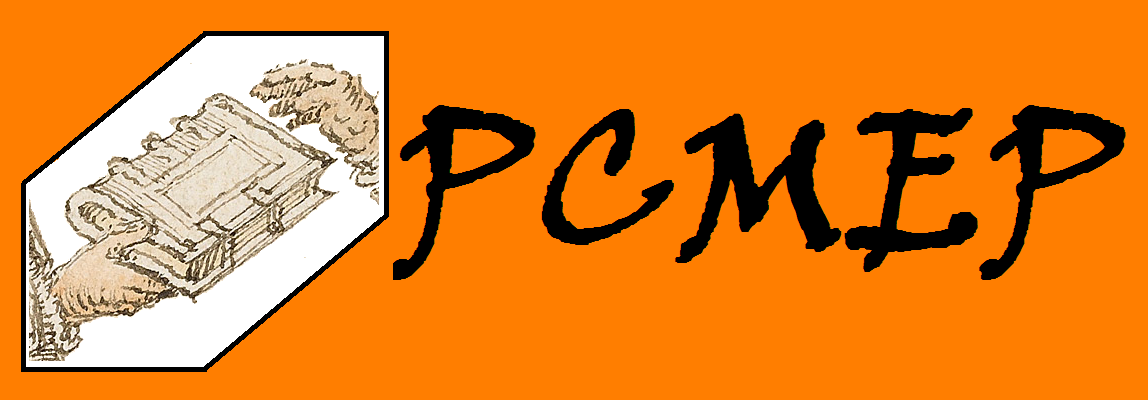The Parsed Corpus of
Middle English Poetry (PCMEP)
PCMEP Text Information
The Land of Cokaygne
Back to PCMEP texts
About the text:
About the edition and manuscript base:
About the file:
Other:
| Text name: | The Land of Cokaygne |
| Alternative names: | Far in sea by west Spain, Cockayne, Cokaygne |
| Content: | The Land of Cokaygne describes an imaginary paradise where all is "game, joy and glee" (line 43). There is no night, strife, death or danger in Cokaygne. Rivers are filled with milk, honey and wine. Roasted geese fly directly into people’s mouths. The monks do not work in abstinence, but can fly around, slap a maiden’s behind before they enjoy a drink, and carry off young nuns to their abbey. However, in order to gain access to this land, a person must wade in pig dung up to one’s chin for seven years. The text is one of the sixteen Kildare poems, which are the earliest linguistic source for the study of Irish English as a separate dialect of English. Ireland had been under Anglo-Norman rule since the Norman invasion of Ireland (1169-72). The poem is also relevant for the study of the medieval peasantry. The everyday reality of medieval life was shaped by bad climate, war, disease, hunger, tediousness and social restrictions, for which The Land of Cokaygne provides an antagonistic mirror image. |
| Genre/subjects: | burlesque, social satire, political parody, monastic criticism, land of plenty, utopia |
| Dialect of original composition: | Unknown The copy of the poem in the manuscript is not the original. The dialect of the archetype has not been ascertained. Based on geographical proximity to Kildare or Waterford in Ireland, where the manuscript witness was produced, the language of the original may perhaps trace to Southern or South-Western English. |
| Date of original composition: | 1275-1310 The poem may have been written "1250-1300" (Wells 1916: 228). The online version of the Middle English Dictionary lists the date of composition as ?a1300. The text belongs to a group of compositions that may have been written between "the late thirteenth and earlier fourteenth centuries" (Benskin 1990: 164). "The text of Cokaygne is not an autograph, so the poem remains hard to date with complete precision. We cannot dismiss the dating suggested by older scholars, to the second half of the thirteenth century. Attempts to date Cokaygne later, in the first decades of the fourteenth, have always presupposed certain historical judgments, for instance attempts to link it with other Middle English poetry" (Dronke 2011: 65). In the absence of further evidence, the poem has been put into PCMEP period 2b (1300-1350) because of the manuscript date. |
| Suggested date: | 1300 |
| PCMEP period: | 2b (1300-1350) |
| Versification: | rhyming couplets, aa |
| Index of ME Verse: | 762 (IMEV), 762 (NIMEV) |
| Digital Index of ME Verse: | 1259 |
| Wells: | 4.29 |
| MEC HyperBibliography: | Cokaygne |
About the edition and manuscript base:
| Edition: | Heuser, Wilhelm. 1904. Die Kildare-gedichte: Die ältesten mittelenglischen Denkmäler in Anglo-Irischer Überlieferung. Bonn: P. Hanstein. 145-150. |
| Manuscript used for edition: | London, British Library, Harley 913, ff.3-6v |
| Online manuscript description: | Manuscript Description, British Library |
| Manuscript dialect: | Irish The poem was written "probably in or about the Abbey of Kildare in Ireland, by emigrants of Southern or South-Western England" (Wells 1916: 229). "[T]he dialect state of the English items [...] indicates that Harley 913 was produced in Waterford, not Kildare" (Benskin 1990: 164). For specifically Irish phonological features in the manuscript, see Hickey (2007: 54-66). |
| Manuscript date: | s. xiv-in "The MS was written probably between 1308 and 1318, at latest before 1325" (Wells 1916: 229, based on Heuser 1913: 16-19). The manuscript is now usually dated later than 'before 1325' because of a mention of the year 1329 in the 'Proverbs:' "The manuscript could have been finished – and for that matter, begun – in 1329. This date, however, is set on f. 15v, just a quarter of the way through the manuscript ("Proverbia comitis desmonie"); in principle, writing could have continued well into the next decade. [...] On present evidence, compilation during the 1330s is reasonably assumed" (Benskin 1990: 164). The online version of the Middle English Dictionary lists the manuscript date as ?a1325. |
About the file:
| File name: | M2b.Cokaygne |
| ID: | Cokaygne.x.y.z: x=page, y=line, z=token |
| Word count: | 1,081 |
| Token count: | 97 |
| Line count: | 190 |
Other:
| General notes: | The core of this text file was created by Ronald Hoffman as a part of the required coursework for an introductory Middle English seminar at the University of Geneva during the fall semester 2013. His help is hereby gratefully acknowledged. The poem contains an unusually large number of existential constructions. Researchers interested in such structures should handle this text with care. |
| Remarks on parses: | The line breaks follow the rhyming scheme as in Heuser's (1904: 145-50) edition. The parses are largely unproblematic. |
References
Benskin, Michael. 1990. 'The Hands of the Kildare Poems Manuscript.' Irish University Review 20.1. 163-193.
Dronke, Peter. 2011. 'The Land of Cokaygne: Three Notes on the Latin Background.' In: Cannon, Christopher & Nolan, Maura (eds.) Medieval Latin and Middle English Literature: Essays in Honour of Jill Mann. Cambridge: D. S. Brewer. 65-75.
Heuser, Wilhelm. 1904. Die Kildare-gedichte: Die ältesten mittelenglischen Denkmäler in Anglo-Irischer Überlieferung. Bonn: P. Hanstein. (available online)
Hickey, Raymold. 2007. Irish English: History and Present-Day Forms. Cambridge: Cambridge University Press.
Wells, John E. 1916. Manual of the Writings in Middle English, 1050-1400. New Haven, CT: Connecticut Academy of Arts and Sciences. (available online)
